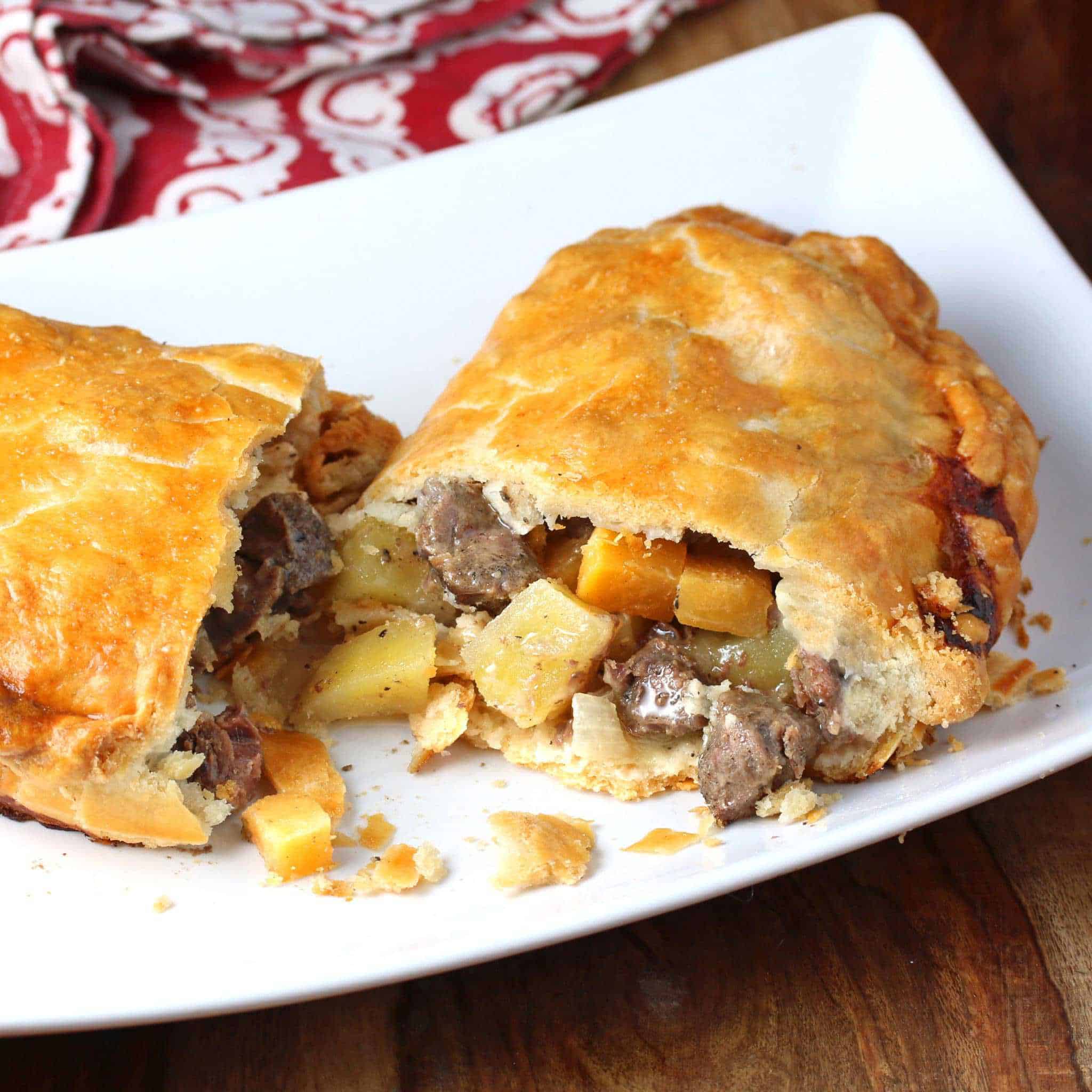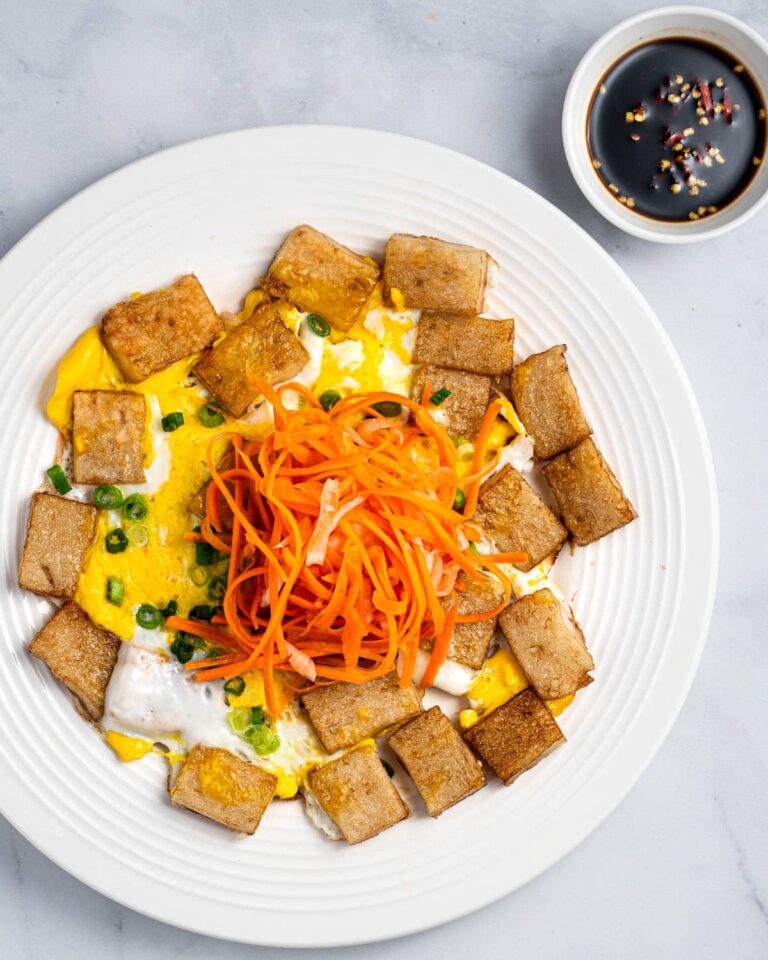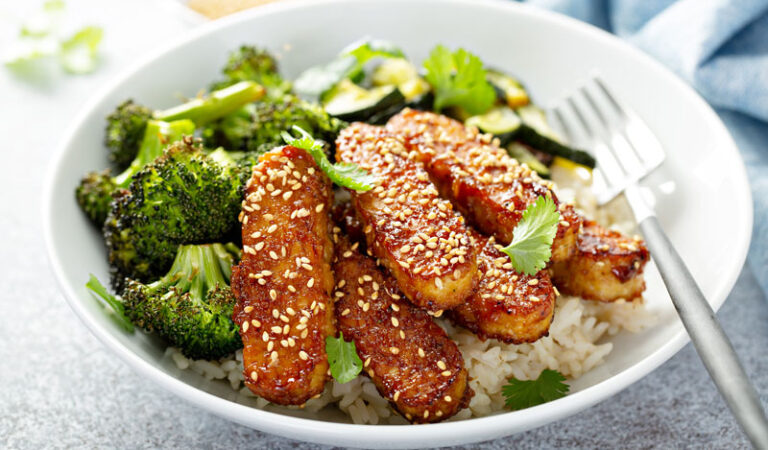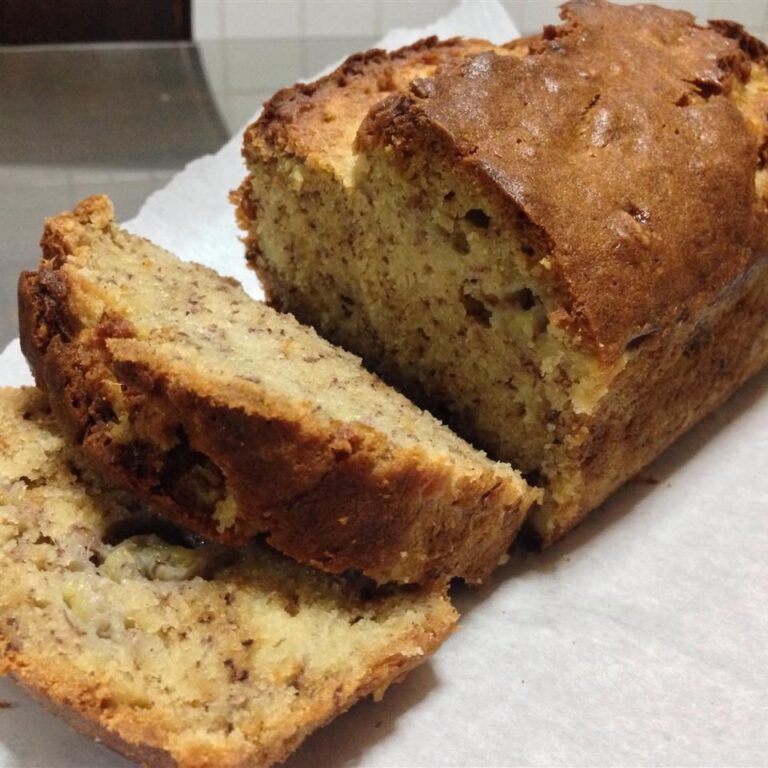Award Winning Cornish Pasty Recipe: Delicious and Authentic Guide
Craving a taste of traditional Cornish pasties? You’re in the right place.
Today, we’re diving into the recipe that won awards and hearts alike. Cornish pasties have a rich history. These delicious pastries date back to the 13th century. Miners in Cornwall needed a hearty meal, and thus, the pasty was born.
A flaky, golden crust filled with savory meat and vegetables, it’s the perfect comfort food. Our award-winning recipe has just the right balance of flavors and textures. Whether you’re a seasoned cook or a beginner, this guide will help you make the best Cornish pasty ever. So, grab your apron, and let’s get baking!
Introduction To Cornish Pasty
Cornish pasties are a delicious and hearty snack beloved by many. These savory pastries have a rich history and cultural significance that makes them special. Let’s explore the origins and importance of this delightful dish.
History And Origin
The Cornish pasty dates back to the 13th century in Cornwall, England. It was initially a meal for miners. The pasty’s unique shape and thick crust made it easy to carry and eat. Over time, the recipe evolved, and each family had its own version.
Traditionally, a Cornish pasty contains beef, potatoes, onions, and turnips. These ingredients are encased in a pastry shell, crimped on the side to seal in the flavors. The miners would hold the crust and discard it after eating to avoid contamination from their dirty hands.
Traditional Significance
The Cornish pasty is more than just a food item; it is a symbol of Cornish heritage. It represents the resilience and hard work of the Cornish people. The pasty has been granted Protected Geographical Indication (PGI) status, meaning only pasties made in Cornwall can be called Cornish pasties.
Today, Cornish pasties are enjoyed worldwide. They are a popular choice at festivals, fairs, and family gatherings. Their enduring appeal lies in their rich history and the comforting taste of tradition.

Credit: cornishpastyassociation.co.uk
Essential Ingredients
The secret to an award-winning Cornish Pasty lies in the quality and freshness of its ingredients. Using the right combination of core components ensures the pasty is delicious and authentic. Here, we focus on the essential ingredients needed to create the perfect Cornish Pasty.
Core Components
To make the best Cornish Pasty, you need a few key ingredients. These include:
- Beef: Traditionally, skirt beef is used for its tenderness and flavor.
- Potatoes: White potatoes add a starchy, comforting texture.
- Swede: Also known as rutabaga, it adds a sweet, earthy taste.
- Onion: Diced onions provide a savory, aromatic element.
- Pastry: Shortcrust pastry is the standard choice for its flaky, buttery texture.
- Seasoning: Simple salt and pepper highlight the natural flavors of the ingredients.
Quality Selection Tips
Choosing high-quality ingredients is crucial. Here are some tips:
- Beef: Look for marbling in the skirt beef. This ensures juiciness and flavor.
- Potatoes: Choose firm, unblemished white potatoes for the best texture.
- Swede: Pick swedes that are heavy for their size, indicating freshness.
- Onion: Use fresh onions with no soft spots or sprouting.
- Pastry: If making pastry, use cold butter and keep ingredients chilled.
- Seasoning: Use freshly ground black pepper and quality sea salt for depth of flavor.
By carefully selecting these core components, you can create an award-winning Cornish Pasty that delights the taste buds.
Preparation Steps
Preparing an award-winning Cornish pasty is an art. It involves two main steps: making the dough and preparing the filling. Let’s break down these steps to make the process simple and enjoyable.
Dough Making Process
Start with the right ingredients. You’ll need flour, butter, water, and a pinch of salt. Use cold butter to get a flaky texture. Combine the flour and salt in a large bowl. Add the cold butter, cutting it into the flour until it resembles breadcrumbs.
Gradually add cold water to the mixture. Stir until the dough starts to come together. Turn the dough onto a lightly floured surface. Knead it gently until smooth. Wrap the dough in cling film and chill in the fridge for at least 30 minutes.
Filling Preparation
For the filling, use beef, potatoes, onions, and swede. Cut all ingredients into small, even pieces. Season the mixture with salt and pepper. A well-seasoned filling makes a delicious pasty.
Mix the filling ingredients in a large bowl. Ensure the seasoning is well distributed. Your filling is now ready to be combined with the dough.
Assembly Techniques
The assembly techniques are crucial in perfecting the award-winning Cornish pasty recipe. Proper assembly ensures the pasty holds its shape and the filling stays intact during baking. This section will guide you through the essential steps of rolling the dough and sealing the edges. These techniques help create a delicious and visually appealing pasty.
Rolling The Dough
Start with well-chilled dough. Divide the dough into equal portions. Roll each portion into a ball. Use a floured rolling pin to flatten each ball. Aim for a thickness of about 1/8 inch. Roll the dough into a circular shape. Maintain an even thickness throughout.
Pro tip: Rotate the dough as you roll to keep it even. Lightly flour the rolling surface to prevent sticking. Over-flouring can make the dough tough. Use a pastry cutter to trim any uneven edges.
Sealing The Edges
Place the filling in the center of the rolled dough. Do not overfill. Gently fold the dough over the filling. Align the edges to create a semi-circle. Press the edges firmly together to seal.
Crimping: Use your fingers to create a crimped edge. Pinch a small section of the dough and fold it over. Continue along the edge, overlapping each crimp. This traditional technique ensures a tight seal.
For a stronger seal, use a fork. Press the tines along the edge of the dough. This creates a decorative pattern and enhances the seal.
Egg wash: Brush the sealed edges with beaten egg. This helps the edges to stick together and gives a golden finish.
Follow these steps, and your Cornish pasty will look and taste amazing.
Baking Instructions
Creating the perfect Cornish pasty requires careful attention to the baking process. From setting the oven to baking duration, every step matters. Follow these instructions to achieve the best results.
Oven Settings
Preheat your oven to 375°F (190°C). This temperature ensures even cooking. A hot oven is key. It helps the pastry become golden and crispy.
Baking Duration
Bake the pasties for 45-50 minutes. Check them at the 45-minute mark. The pastry should be golden brown. If not, give it a few more minutes. Let them cool slightly before serving.
Serving Suggestions
When serving your award-winning Cornish pasty, consider these delicious and creative ideas. Whether for a family dinner or special event, these suggestions will elevate your dish. Let’s explore some accompaniments and presentation ideas to make your meal memorable.
Accompaniments
Pair your Cornish pasty with sides that enhance its flavors. Here are some simple yet tasty options:
- Mushy peas: A traditional British side dish.
- Coleslaw: Adds a fresh, crunchy texture.
- Roasted vegetables: Carrots, parsnips, and potatoes work well.
- Green salad: Light and refreshing with a vinaigrette dressing.
For a more substantial meal, consider these hearty sides:
- Mashed potatoes: Creamy and comforting.
- Gravy: Perfect for dipping and adding moisture.
- Baked beans: A classic and filling choice.
Presentation Ideas
Presentation matters. Here are some ideas to make your Cornish pasty look as good as it tastes:
| Idea | Description |
|---|---|
| Individual servings: | Serve each pasty on its own plate, garnished with herbs. |
| Platter display: | Arrange multiple pasties on a large serving platter with sides. |
| Rustic style: | Serve on wooden boards for a homely feel. |
| Mini pasties: | Create smaller versions for party appetizers. |
Adding a few garnishes like fresh herbs or a dollop of sour cream can also enhance the visual appeal. Get creative and have fun with your presentation!
Common Mistakes
Creating the perfect Cornish pasty is a culinary art. Many people make common mistakes that affect the taste and appearance of this classic dish. Let’s look at some frequent errors and how to avoid them.
Avoiding Soggy Crust
A soggy crust ruins the texture of a Cornish pasty. To prevent this, ensure the filling is not too wet. Pat dry the vegetables and meat before adding them to the pastry. Use a thickening agent like flour or cornstarch to absorb extra moisture. Bake the pasty at the right temperature. A hot oven helps the crust set quickly and remain crisp.
Preventing Filling Leaks
Filling leaks can make the pasty look unappetizing. Seal the edges of the pastry well. Use an egg wash to help the edges stick together. Crimp the edges tightly to avoid gaps. Ensure the filling is evenly distributed and not piled high. This prevents the pastry from breaking during baking.
Variations And Twists
The classic Cornish pasty is a beloved dish. Its hearty filling and flaky crust have won many hearts and awards. Yet, there’s always room for a bit of creativity. This section dives into exciting variations and twists that make this traditional recipe even more interesting.
Vegetarian Options
Vegetarian pasties are a tasty and healthy choice. They offer a delightful twist on the classic recipe. Here are some popular ingredients for vegetarian pasties:
- Root Vegetables: Carrots, parsnips, and potatoes add flavor and texture.
- Cheese: Feta, cheddar, or goat cheese bring a creamy richness.
- Spinach and Mushrooms: These provide a savory and earthy taste.
- Lentils: They are a great source of protein and add a nutty flavor.
Mix these ingredients with onions, garlic, and herbs. You get a filling that is both delicious and nutritious. This vegetarian option is perfect for those who want to enjoy a classic dish with a modern twist.
Modern Takes
Modern takes on the Cornish pasty bring new flavors and techniques. These variations keep the dish exciting and relevant. Let’s explore some innovative ideas:
| Variation | Description |
|---|---|
| Spicy Pasties | Add chilies, cumin, and coriander for a fiery kick. |
| Seafood Pasties | Use prawns, cod, and a creamy white sauce. |
| Sweet Pasties | Fill with apples, cinnamon, and a touch of sugar. |
Experimenting with different fillings can lead to surprising and delightful results. For example, a spicy pasty can be paired with a cooling yogurt dip. Seafood pasties can be served with a fresh salad. Sweet pasties make a wonderful dessert or breakfast treat.
These modern takes bring a fresh perspective to a classic dish. They are perfect for those who enjoy experimenting in the kitchen. Try these ideas and create your own award-winning pasty.
Storing And Reheating
Storing and reheating your Award Winning Cornish Pasty is crucial. Proper storage keeps your pasty fresh and tasty. Reheating ensures it remains delicious. Follow these tips for the best results.
Storage Tips
Let your Cornish pasty cool before storing. Wrap it in foil or plastic wrap. Use an airtight container for extra protection. Store in the fridge for up to three days. For longer storage, freeze your pasty. Place it in a freezer-safe bag. Label with the date to keep track.
Reheating Methods
Reheating your Cornish pasty properly brings back its fresh taste. Preheat your oven to 350°F (175°C). Place the pasty on a baking sheet. Bake for 15-20 minutes. Check for a hot center. You can also use a microwave. Heat on high for 2-3 minutes. Let it rest for a minute before eating. Avoid using a high setting. This keeps the pasty from drying out.
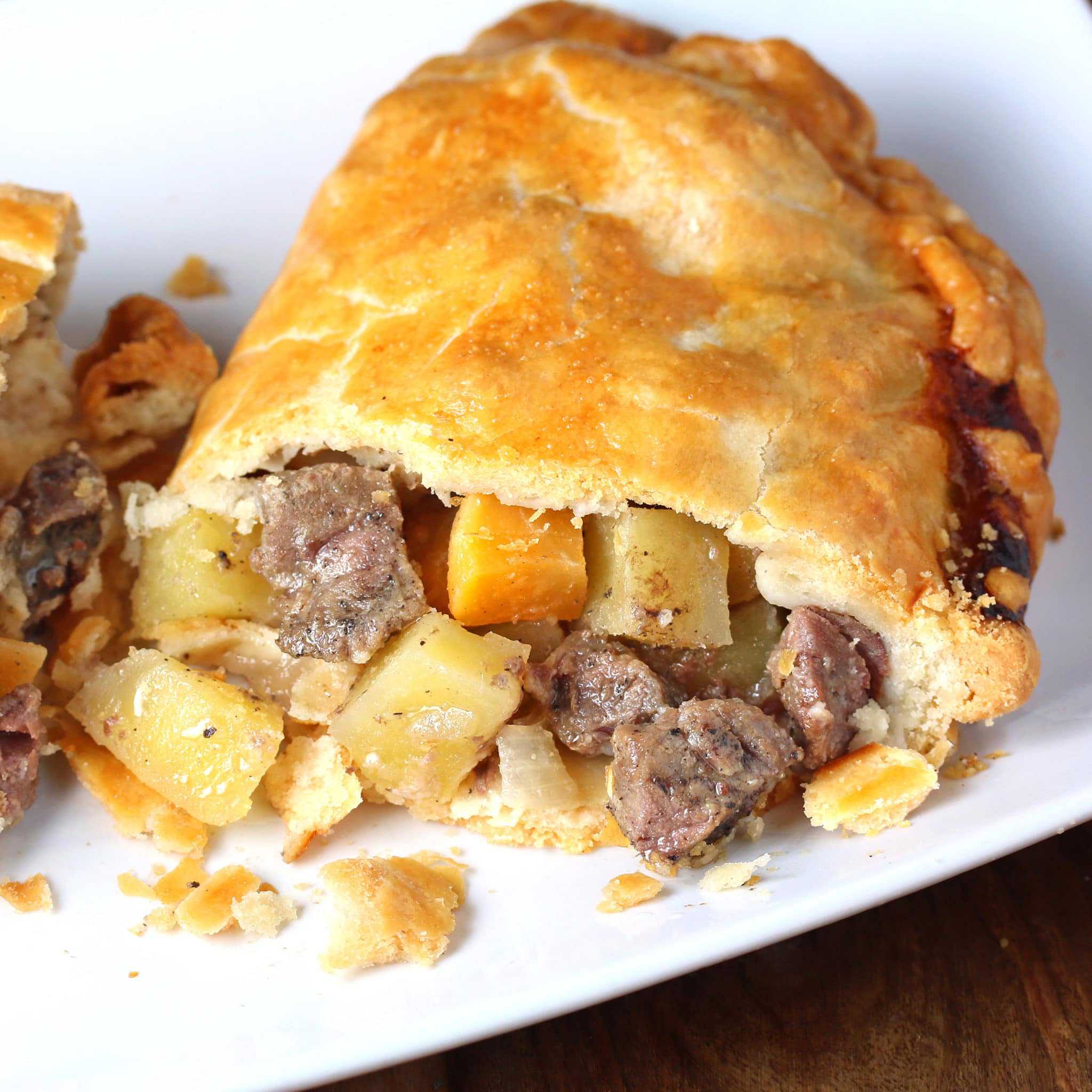
Credit: www.daringgourmet.com
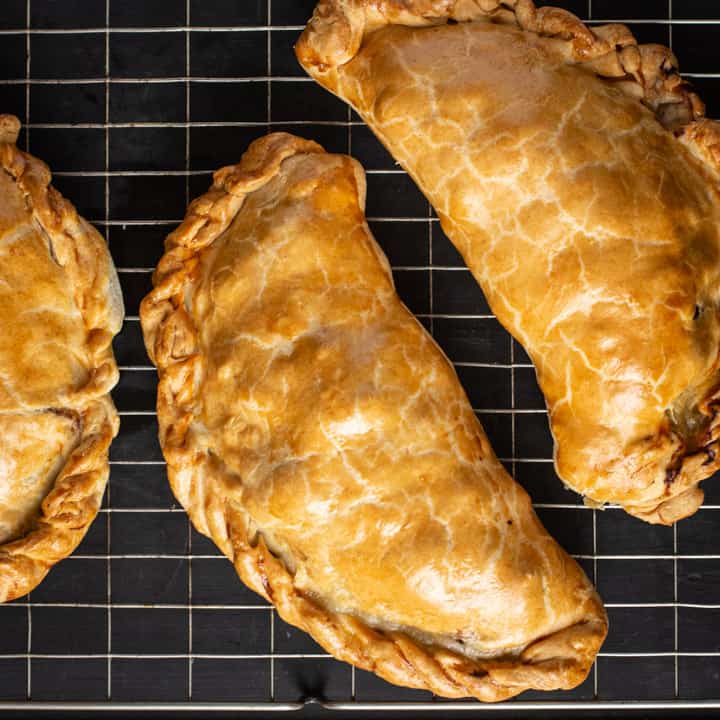
Credit: hedgecombers.com
Frequently Asked Questions
What Makes A Cornish Pasty Award-winning?
An award-winning Cornish pasty boasts a golden, flaky crust and flavorful filling. The traditional mix includes beef, potatoes, swede, and onions. Quality ingredients and perfect seasoning set it apart.
How Do You Make A Traditional Cornish Pasty?
To make a traditional Cornish pasty, combine beef, potatoes, swede, and onions. Season well and encase in shortcrust pastry. Bake until golden.
What Are The Key Ingredients In Cornish Pasty?
The key ingredients in a Cornish pasty are beef, potatoes, swede, and onions. Use shortcrust pastry for the perfect encasement. Season generously.
Can I Freeze Cornish Pasties?
Yes, you can freeze Cornish pasties. Ensure they are well-wrapped to prevent freezer burn. Reheat in the oven for best results.
Conclusion
This award-winning Cornish pasty recipe brings joy to every meal. Simple ingredients. Easy steps. Perfect for family dinners or gatherings with friends. Enjoy the rich flavors. Experience the tradition of Cornwall in every bite. Try this recipe today. Share the love of homemade pasties with everyone.
Happy cooking!

